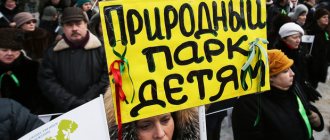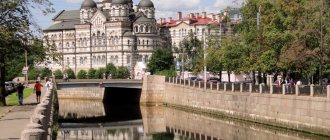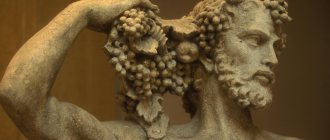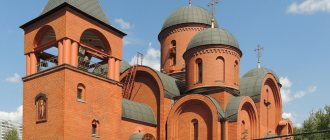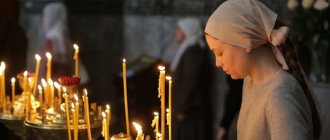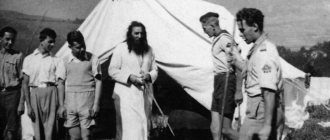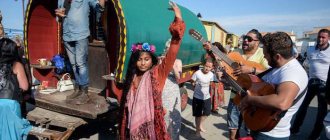11/09/2016
There are many Orthodox shrines in our region, and both believers and unpious tourists, who have always been attracted by unusual, sometimes inexplicable phenomena, show interest in them.
A trip to holy places can be not only a pilgrimage, but also simply educational. Author:
Svetlana Kelaseva
Worship or knowledge?
Pilgrimage and tourism should not be confused. Pilgrims and tourists may visit the same places, but for different purposes. If tourists strive to see new places, then for pilgrims the main thing is prayer and worship of shrines for the sake of cleansing the soul.
The Russian Orthodox Church considers religious tourism an important means of spiritual enlightenment and treats this phenomenon with understanding and respect.
The opportunity to make a pilgrimage trip to the Orthodox shrines of the Samara region is provided by the diocesan pilgrimage service "Kitezh", while the organization of secular educational excursions is carried out by Samara, "U-ra", Proftsentr", "Tale of Wanderings", "Alliance Tour".
The holy places of the Samara region also include the Nikolsky spring in Zhiguli, in the Kamennaya Chasha tract. The tract is a natural expansion of the Shiryaevsky ravine at the confluence of the Kamenny ravine. A huge “bowl” of stone blocks formed here, surrounded by mountain ridges. On the slopes, the rocks are white among the green trees, and a spring with holy healing water emerges from under the stone cornices. It is believed that bathing in this spring brings health and longevity.
Miraculous spring
One of the most famous Samara shrines, of interest not only to our believers, but also to residents of other regions, is the small village of Tashla in the Stavropol region. Here in October 1917, the Most Holy Theotokos revealed her icon “Deliverer from Troubles” and left a miraculous spring, on which many amazing healings subsequently occurred.
The story goes that in October 1917, the queen of heaven appeared in a dream to one young Tashlin woman and indicated the place where she needed to go and dig her miraculous image out of the ground. The girl told her friends about the vision. The three of them went to the Tashlin ravines. When they began to dig the ground, people gathered who considered the idea empty and stupid. But when the girls took the icon out of the ground, and a spring began to flow from the dug hole, people realized that a miracle had truly appeared to them.
The priest took the icon to the church, and already on the way the first healing happened: a parishioner who had been ill for thirty-two years venerated the icon and suddenly felt a surge of strength.
Until 1925, people from all over the Volga region went to the icon and to the source. When the new government declared war on religion, the church was closed, and believers saved the icon from desecration by secretly passing it from hut to hut. Then the new government decided to do away with the spring. A cattle yard was set up near it, and the holy place was soon filled with manure. However, the spring survived. He made his way elsewhere.
Today, the icon of the Most Holy Theotokos “Deliverer from Troubles” is kept in the Trinity Church in the village of Tashla, and people from all over the country still come to the bathhouse made at the site of the icon’s appearance in the hope of healing.
Bus pilgrimage trips are organized from Samara to Tashla 2-3 times a month. The organizer is the Samara Diocesan Pilgrimage Service “Kitezh” together with the Russian Spiritual Mission. Often pilgrims are accompanied by a priest, who on this trip performs a missionary function: talks with people and answers questions.
“In Tashla, tour participants must visit the temple, because pilgrimage involves not only mechanical immersion in the source, but, first of all, worship of the shrine,” says Ekaterina Samsonova, . “Pilgrims venerate the icon, can pray, light candles, order services, and only then a bus takes them to the source, where believers can plunge into the font and draw water from the well.”
The cost of such a trip is 300 rubles. Additional details in the article “Tashla”
Archbishop Sergius of Samara and Syzran was the first to compare Podgora with Athos when he visited the Samara Luka National Park and drew attention to the similarity of the Zhiguli Mountains with the views of the Holy Mountain in Greece. With the blessing of Bishop Sergius, two monasteries were founded in this place in 2003: the Ilyinsky convent for women and the men’s monastery in honor of the Cross of the Lord.
Entrance for men only
Another interesting place for pilgrims is Podgory, “Volga Athos”. Archbishop Sergius of Samara and Syzran was the first to compare Podgora with Athos when he visited the Samara Luka National Park and drew attention to the similarity of the Zhiguli Mountains with the views of the Holy Mountain in Greece. With the blessing of Bishop Sergius, two monasteries were founded in this place in 2003: the Ilyinsky convent for women and the men’s monastery in honor of the Cross of the Lord.
The pilgrimage trip to Podgory is by motor ship and on foot, and lasts for the whole day. Its cost is 350 rubles. In summer, such tours are organized once a week on Saturdays. Usually a small group of 5-7 people gathers.
A one and a half hour boat trip allows you to enjoy the Volga landscapes and get into the right mood. Further, from the pier to the village, pilgrims walk. “When going on this kind of trip, it is recommended to sensibly assess your strength,” advises Ekaterina Samsonova. “You will have to walk a lot, the trip is very intense, so it is better for people with limited mobility to avoid it.”
The tour program includes a visit to the male and female monasteries, as well as a source where you can plunge into the font and collect holy water. The monastery has a monastery, a separate settlement from the monastery with stricter rules. Women are strictly prohibited from entering there. Men, having received a blessing, can visit this place and venerate the relics of the Greek saint Nektarios of Aegina.
In the Ilyinsky Women's Monastery, a church that was destroyed in the 1920s was recently restored. Now the monastery has its own territory, construction of pilgrim and abbot buildings and an icon-painting workshop is underway. With the blessing of the abbess, pilgrims can stay here for several days and help the monastery in construction.
In the Zhigulevsky Nature Reserve
The holy places of the Samara region also include the Nikolsky spring in Zhiguli, in the Kamennaya Chasha tract. The tract is a natural expansion of the Shiryaevsky ravine at the confluence of the Kamenny ravine. A huge “bowl” of stone blocks formed here, surrounded by mountain ridges. On the slopes, the rocks are white among the green trees, and a spring with holy healing water emerges from under the stone cornices. It is believed that bathing in this spring brings health and longevity. Back in the 30s of the last century, the source was well known and listed in all tourist guides as one of the main attractions of the Zhigulevsky Nature Reserve. Then they forgot about him. But today, numerous pilgrims from different cities are again striving to get to the Stone Bowl, to the source of St. Nicholas the Wonderworker. With the blessing of Archbishop Sergius of Samara and Syzran, the source is included in the number of pilgrimage routes to the holy places of the region, Russia and the entire Orthodox world. Through the efforts of believers, a chapel was erected next to the source, during the consecration of which eyewitnesses saw a glow on the face of St. Nicholas the Wonderworker. Photographs taken during the ceremony show a glow over the chapel. The cost of the excursion to the Stone Bowl is 650 rubles. provided that a group of 40 people is recruited.
Two villages, two temples, two springs
Not far from the city of Zhigulevsk there is the village of Bolshaya Ryazan, famous for two holy springs. One is consecrated in the name of the founders of Russian monasticism, saints of the Kiev-Pechersk Lavra Anthony and Theodosius of the Pechersk, the second - in the name of the icon of the Mother of God “The All-Tsarina”. “The springs are located two hundred meters from each other,” says tourism director general Maria Bondareva, “ and each has its own healing properties, different from other sources. Pilgrims claim that water from the source in the name of the icon of the Mother of God “The All-Tsarina” even helps to get rid of cancer!”
Once upon a time the village had its own church, which after the revolution suffered the fate of most Orthodox churches. The new church in the name of the Entry into the Temple of the Blessed Virgin Mary was consecrated in May 2002. You can get acquainted in more detail with the history of the temple and the shrines located in it during a secular excursion, which also includes a visit to the ethnographic and local history museum, which introduces visitors to the animal world of Samarskaya Luka, the way of life and the life of peasants.
Some secular excursions to Greater Ryazan include a visit to the village of Brusyany, where you will be invited to visit the ancient temple in the name of Cosmas and Domian. This temple is famous for its myrrh-streaming icons. In addition, the acoustics here are amazing. When the voice of one of the parishioners sounds, it seems that angels echo him from heaven. The floor of the church is covered with carpets brought as a token of gratitude by people whose requests and prayers were heard in this temple.
The excursion program, which includes a visit to Bolshaya Ryazan and Brusyan, is designed for 10 hours, its cost is 650 rubles. Entrance to the museum is paid additionally.
Along the steppe Trans-Volga region
Another place where religious tours are often organized is a holy spring near the village of Znamenka, Bogatovsky district. The road there lies along the steppe Trans-Volga region. The guide talks about the villages and hamlets encountered along the way. The first stop is in the village of Belovka at the Church of the Intercession of the Virgin Mary. In this temple, built with the money of a local entrepreneur, the miraculous icon “Worthy to Eat” miraculously appeared. People come to her with their troubles and aspirations, and she helps them find the missing, take the right path - in a word, heals their bodies and souls.
Many people are helped to cope with their troubles by communicating with a local priest, who is ready to listen to everyone who comes to the temple and help him with advice. Further, the wanderers’ path lies to the Nikolsky spring, near the village of Znamenka. Local legend says that in the 70s of the 19th century the miraculous icon of St. Nicholas of Myra appeared in this spring. The source gushes out from under the roots of trees and forms a small stream-waterfall.
“You can book any excursion of a secular nature on any day, but provided that there is a group of at least 40 people,” says Maria Bondareva. – If there are fewer people willing to go on the trip, the cost of the tour will increase slightly. In summer, we offer group tours, when the number of pilgrims does not matter and everyone can join the general group. During the period from autumn to spring, only group tours are possible. Of course, when going on a pilgrimage trip, you have to take weather conditions into account. For example, it is not advisable to go to Stone Bowl or Belovka during heavy rain or snow drifts.”
Reference:
Monasteries of the Samara and Syzran diocese Zavolzhsky Monastery in honor of the Honest and Life-Giving Cross of the Lord: p. Podgory Rector: Abbot GEORGE (Shestun) Zavolzhsky St. Elias Convent: s. Podgory Rector: Abbess ANASTASIA (Shestun) Holy Mother of God Kazan Monastery: village. Vinnovka Abbot: Hieromonk ARISTARCH (Bezlapov) Ascension Monastery, Syzran Abbot: Abbot MARK (Alekseev) Resurrection Monastery: Tolyatti Abbot: Abbot Archimandrite. HERMOGENES (Kritsyn) In honor of the Annunciation of the Mother of God: Tolyatti Rector: Abbot SOFRONY (Balandin) (occupies the position of dean). Iversky Convent: Samara Abbess: Abbess JOANNA (Kapitantseva) Holy Resurrection Monastery: Samara Abbot: Abbess SERAPHIM (Glushakov)
print version
Tags places of pilgrimage, monasteries, temples, test tag
Comments
| Login via: |
Living springs
On the eve of Holy Easter, the book “Holy Springs of the Samara Region” was published in Samara. Its author, deputy head of the press service of the Samara Diocesan Administration Oleg Bedula, answered questions from our freelance correspondent.
— Oleg Ivanovich, what is this book about?
— Chance helped me start working on it.
One day, in the archives of the diocese, employees discovered scattered information about several holy sources - so the desire arose to collect their entirety, “to unite history and modernity.” For the first time, journalists from the Blagovest newspaper spoke about the holy springs of the Samara region. Seventeen years ago they published the book “Walking through the Samara Shrines,” which soon became a bibliographic rarity. It briefly talks about the nine holy springs. No matter how much we searched, we could not find information about holy sources in the literature of the Soviet period. — Who helped you in compiling the guide?
— The parishes of rural churches and believers helped, who preserved written historical information, and more often, oral traditions about fertile springs and springs.
For example, a photograph of the Feodorovsky spring was given by Nina Torgashkina from Syzran. A resident of the village of Sadgorod, Larisa Kolchina, sent a notebook with a story about how the bathhouse was built at the holy spring in honor of the Royal Martyrs, as well as photographs of the source itself. A journalist from the village of Shentala, Nadezhda Tairova, collected information about two local springs. A school teacher in the village of Kirovsky, local historian Alexandra Alekhina pointed out the place where the holy well in honor of Saint Alexander Chagrinsky is located. The librarian of the village of Zuevka, Tatyana Shatskikh, took us to the Nikolsky spring... - And the holy springs probably have their own history?
- It is in many ways similar to the history of Orthodox churches - birth into life, persecution and destruction, desecration, oblivion, return to life... In the old days, sources were very revered.
They were protected in the same way as holy temples. This is probably why the Bolshevik government constantly fought against them. For example, in the village of Tashla, the holy spring was filled with manure several times, the Communists poured three barrels of a phenolic additive from a local oil shale processing plant into the Feodorovsky spring near Syzran, in the spring of the village of Russkaya Selitba they tried to drown puppies... - How many holy springs are there in the region?
- About fifty. I say approximately, because from time to time new sources are consecrated. Not everyone probably knows that there are 1,536 springs in the Samara region. Most of them are in the Klyavlinsky district - 215. There are about 150 springs in the Isaklinsky district. There are many villages where there are five or more springs, but in the village of Klyuchi, Isaklinsky district, there are 14 springs at once! The fact that the springs were consecrated in honor of the miraculous icons of the Most Holy Theotokos, saints of God, is not at all accidental. The fact is that the sources became famous among the people because of the holy icons that appeared in them. For example, in the village of Tashla, at the site where the icon “Deliverer of Troubles” was found, a spring immediately began to flow. A similar story happened in the village of Russkaya Selitba. When a local peasant woman began to dig clay under the mountain, she found a small Vladimir Icon of the Mother of God, and a spring began to flow from the dug hole. In the village of Tokmala, the Kazan Icon of the Mother of God was found at the bottom of a stream. Also from the water was raised the holy image of the Great Martyr Paraskeva Pyatnitsa, in the village of Vladimirovka, Khvorostyansky district. The icon of St. Nicholas the Wonderworker was raised from a well by a peasant woman in the village of Zuevka... In many villages, believers have preserved the ancient names of the springs, for example, “Popovsky Spring”, “Cross”, “Holy Spring”, “Praying Woman”, “Church Spring”, “Abraham Spring” " From our history we know that in ancient times settlements, as a rule, arose near water sources. This is especially typical for our forest-steppe region. Once a settlement was established, a temple was immediately built, often in close proximity to a water source, which was important, say, during the celebration of Epiphany, during the Sacrament of Baptism, and water-blessing prayers.
In the surviving historical information about the temples of the Samara region, holy springs are often mentioned. For example, in the clergy registers of the Shigonskaya volost for 1740, the following entry was preserved: “From the temple of the village of Kuzkino, religious processions are carried out to the source of the holy unmercenaries Cosmas and Damian.” In Syzran there are documents that tell how in 1730 one peasant girl washed herself with water from the spring in which the icon of the Mother of God was found, and after that she was healed of leprosy. — What diseases are healed from today at holy springs?
— People call the holy spring in the village of Tashla the main “medical hospital” of the Samara diocese.
People come to live water from all over Russia, near and far abroad. Here they are cured of allergies, stomach ulcers, asthma, and women's diseases. Through prayer to the Mother of God, an AIDS patient was healed, and a drug addict was cured. Those with joint pain, poor vision, and skin diseases are especially often healed. There was a case where a paralyzed woman recovered. In the village of Bolshaya Tsarevshchina (Volzhsky), at the spring in honor of the icon of the Mother of God “Inexhaustible Chalice,” those suffering from drunkenness, drug addiction, and patients with rheumatoid arthritis and osteochondrosis are recovering. The holy springs in the village of Bolshaya Ryazan are recognized as unique. Here they are healed from diseases of the hands and feet, cancer, as well as skin diseases. They pray for the gift of a child to the childless at two Nikolsky springs - in the village of Spiridonovka and the settlement of Solnechnaya Polyana, as well as at the spring in honor of the Feodorovskaya Icon of the Mother of God, in the village of Kashpir near Syzran. At the source in honor of the Monk Alexander of Svirsky, in the village of Stepnoye Durasovo, they ask for the gift of a male child. In our region there are holy springs where those possessed by demons receive relief from their suffering. Local resident Larisa Kolchina spoke about one such source, in the village of Sadgorod. —Who brings holy springs back to life?
— As a rule, all restoration work, including landscaping of the adjacent territory, is carried out by parishioners of Orthodox churches.
Several years ago, the Government of the Samara Region allocated two million rubles for the improvement of several sources. But this is a one-time, only case of help. I am glad that the administrations of several districts are now taking part in the improvement of local springs. For example, the authorities of the Isaklinsky district built a beautiful chapel, bathhouse and fence at the source of the Savior Not Made by Hands. After the consecration, the source was connected to the main water supply network of the regional center. Residents of the village of Shigony also receive healing water through the water pipe - from a source in honor of the Holy Trinity. But the authorities of the Klyavlinsky district have developed a project for the eco-cultural zone “Pearl”, the main object of which is the revived holy spring in honor of the Monk Alexander Svirsky. At the regional fair of sociocultural projects held by the Government of the Samara Region, “Pearl” took first place. Another example is that the authorities of the Khvorostyansky district allocated money for the reconstruction of a source in honor of the Great Martyr Paraskeva Pyatnitsa. Even earlier, in 1990, the chairman of the collective farm in the village of Sidelkino, Chelno-Vershinsky district, I. Frolov, restored the holy spring in honor of the Kazan Icon of the Mother of God. I will also say about the contribution of ordinary citizens. In the village of Staroye Vechkanovo, entrepreneur Yuri Vasiliev, a former local resident, at his own expense erected a grandiose architectural complex of wild stone, granite and concrete at the spring. The opening panorama amazes pilgrims with its scale. Many sources were consecrated by Archbishop Sergius of Samara and Syzran, others by local priests. — In the book, did you talk about all the holy springs?
- Not about everyone. There were various reasons for this. For example, this one. Recently, in one of the churches being restored, right in its central part, a spring began to flow. Its water turned out to be healing. At the request of the local dean, it was decided not to make this wonderful incident public for the time being, so that the mass pilgrimage to the village of N. would not interfere with the restoration work. I hope that in the second edition of the book we will tell about this wonderful source.
In the pictures: a holy spring in the name of St. Nicholas the Wonderworker in the village.
Zuevka, Neftegorsky district; holy spring in the name of St. Alexander of Svirsky in the village. Stepnoye Durasovo, Klyavlinsky district; Holy Lake near the village. Exit Bogatovsky district. Prepared by Vladislav Podmarkov 05/07/2009
Prayer places in Samara. Ten temples that are a hundred years old or more
Ten Samara churches that are a hundred years old or more. Our city, alas, is not rich in monuments of church architecture, and simply not rich in old churches. Everything that was built by our ancestors was zealously destroyed by our descendants, who are already our ancestors. Little remains. In a city of millions, which is more than four hundred years old, there are only ten churches of different faiths, from a century ago and older. You can walk around them in a day. Of these, only one was always open - from the day of its consecration.
The Cathedral in honor of the Holy Ascension of Christ was consecrated in 1848.
The only Samara temple in the style of classicism. The wooden Ascension Church stood on the corner of Vodniki and Komsomolskaya, but after the fires, when the city burned out almost completely, they decided to build the church higher. Three emperors visited here and the creation of the Samara Diocese was announced here 154 years ago. For a long time the cathedral was the largest in Samara. After the revolution it was closed. Transferred to the church in 1991, it was restored according to the Samogorov-Pastushenko project. The first service took place in May 1993. A church library, an almshouse and a Sunday school were created at the cathedral. Address: Stepana Razin, 78
Iversky Women's Monastery Founded as a community in 1850, renamed a monastery in 1860.
The only surviving monastery within the city. Now it is growing rapidly and approaching the scale of a hundred years ago. Then the Iversky Monastery consisted of three churches: Sretensky (Assumption since 1896), a temple in honor of the Iveron Icon of the Mother of God, a bell tower, 10 women's residential buildings, 4 wooden outbuildings, 2 carriage houses, 4 barns, a stable, a stone bathhouse, a laundry room, and cellars. The monastic territory, located on a steep Volga slope, was equal to 7 dessiatinas (7.65 hectares). In 1876, the nuns of the monastery embroidered the famous Samara Banner, which was presented to the Bulgarian militia. The monastery was closed in 1925 and a significant part of the buildings was demolished. However, the church buildings themselves, although without domes, were preserved and after the return of the church, through the efforts of Abbess Ioanna (Kapitantseva), they regained their original appearance. Now the bell tower has been almost completely restored. Address: Volzhsky Prospekt, 1
The Cathedral in honor of the Intercession of the Mother of God was consecrated in 1861.
The only cathedral in the city that has never closed. Services did not stop even after the arrival of Soviet power. For almost half a century (!) Pokrovsky and Petropavlovsky were the only operating churches in Kuibyshev. Bishop Mitrofan (Gutovsky) of Kuibyshev and Metropolitan Manuel (Lemeshevsky) were buried in the vestibule of the cathedral. On November 7, 1977, on the day of the sixtieth anniversary of the October Revolution, the cathedral was set on fire by unknown persons, as a result of which the paintings from the beginning of the century were almost completely destroyed. Its renovation took three years. In 1996, the temple was restored, and its tent coverings were decorated with a gold-like coating. Now Pokrovsky is being reconstructed again, but the temple is open. Address: Leninskaya, 75-a
Read more: SamKult.
Area of culture *** Tags history temples

